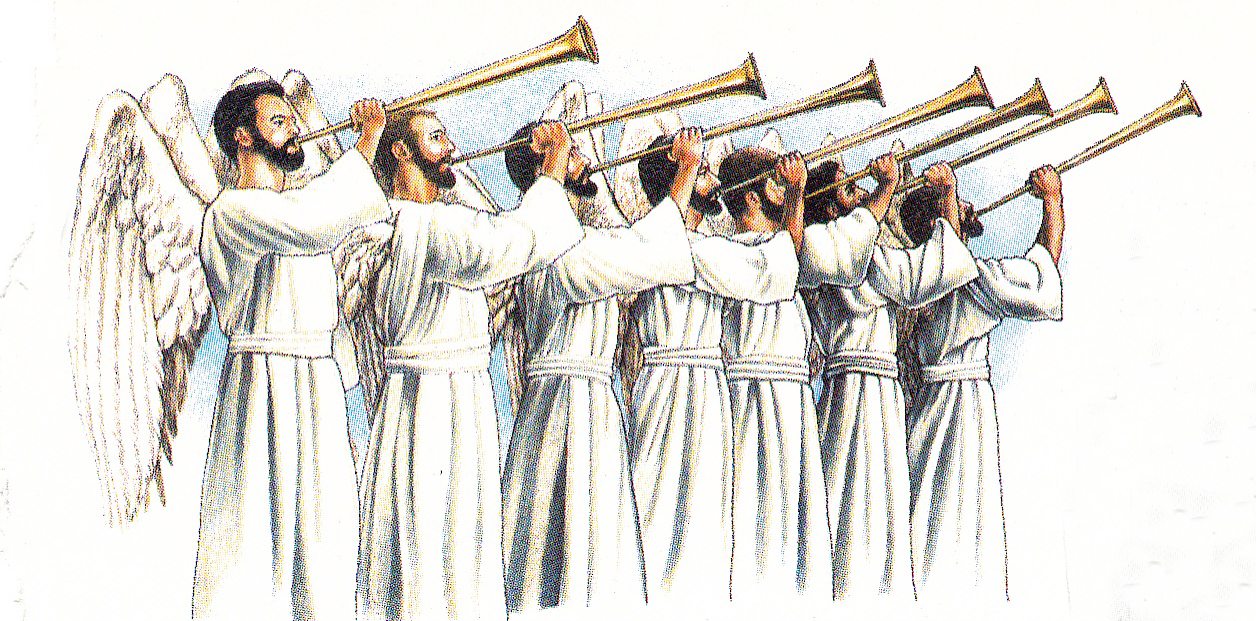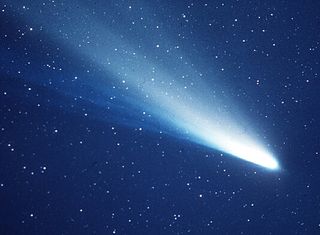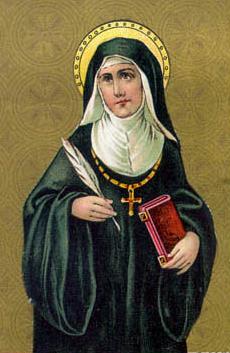The Three Days of Darkness (Part Two)
In the course of his research, Velikovsky uncovered written evidence to support a completely new interpretation of Biblical history, as it related to the events that occurred in Egypt at the time of the Exodus. He explained the various plagues that occurred at that time in the following way.
If at the time of Moses, the earth happened to cross the path of a large comet as it headed away from the sun, then the first sign that the people on earth would experience would be a stream of very fine dust particles entering the atmosphere.
And if the nucleus of the comet contained iron, then the dust particles in the tail of the comet would be coloured red. And as these red dust particles fell on the surface of the earth, they would turn the land, the seas, rivers and lakes a blood-red colour.
These particles would also pollute the water, making it unfit to drink. This contaminated water would then cause the fish to die, and their dead carcases would soon begin to decompose, causing the rivers to give off a foul odour.
In order to escape, the frogs would abandon the rivers and make their way into the houses of the Egyptians. As the earth continued to pass through the tail of the comet, the red dust now coating the land would cause an infestation of lice, followed by immense swarms of flies.
This dust would also be likely to cause a variety of skin infections, boils and blisters, that would afflict men and animals alike. The lice and flies would also lead to outbreaks of disease among the livestock of the Egyptians.
As the earth plunged deeper into the tail of the comet, the particles of reddish dust would give way to gravel particles. These superheated particles would then fall to earth in the form of fiery hailstones that would “run along the ground”.
These flaming meteorites would not only strike people and animals caught in the open, but they would set fire to the crops in the field as well. And any crops left standing would likely be destroyed by the vast swarms of locusts that would follow.
Finally, as the comet drew closer still, the entire earth would be enveloped in thick, choking dust that would blacken the skies and lead to days and nights of complete darkness. Truly, this would be a darkness that could be felt, just as was described in Egypt during the plagues of Moses.
Although Velikovsky was not interested in prophecy, or in the book of Revelation, anyone who has read any of his works cannot fail to notice the parallels between the events recorded at the time of the Exodus, and the events prophesied by St. John.
The Book of Revelation
As previously mentioned, in his Book of Revelation, St. John described seven angels associated with seven trumpets, each of which signified a particular scourge or disaster that would afflict the earth.
According to these verses, a “great star from heaven” would appear in the skies above the earth “burning like a lamp”, that would cause men’s hearts to quake with fear. This great star would be characterised by the following features:It would generate “hail and fire mingled with blood”
• It would burn up “the third part of the trees”
• It would burn up “all the green grass”
• “A great mountain burning with fire” would be cast into the sea
• “The third part of the sea would become blood”
• One third of all the creatures living in the sea would die
• One third of all the ships in the sea would be destroyed
• A “great star from heaven” would fall upon one third of the rivers
• One third of the waters would become “wormwood” (bitter)
• Many people would die from drinking these bitter waters
• “A third part of the sun and moon” would be smitten
• “A third part of the stars would be darkened”
• The sun would not shine for three days (a third part of it)
• The night sky would also be dark for three nights
This theme of cosmic catastrophe, causing blood, hailstones, brimstone and fire to rain down upon the earth at the time of the end of the world can be found throughout the Bible. For example, in the Book of Zephaniah:
“The great day of the Lord is near, it is near, and hasteth greatly, even the voice of the day of the Lord: the mighty man shall cry there bitterly.
“That day is a day of wrath, a day of trouble and distress, a day of wasteness and desolation, a day of darkness and gloominess, a day of clouds and thick darkness, a day of the trumpet and alarm against the fenced cities, and against the high towers.” (Zephaniah 1: 14-16)
When the disciples asked Jesus about the signs that would precede his return to earth, he replied:
“And there shall be signs in the sun, and in the moon, and in the stars; and upon the earth distress of nations with perplexity; the sea and the waves roaring; Men’s hearts failing them for fear, and for looking after those things which are coming on the earth: for the powers of heaven shall be shaken.” (Luke 21:25-26)
The obvious question that arises from these Biblical passages is what sort of event would cause the powers of heaven be shaken, leading to signs in the sun, the moon and the stars. Clearly, this would have to be an astronomical event of gigantic proportions.
“And I saw the seven angels which stood before God; and to them were given seven trumpets.” (Revelation 8:2)

The First Trumpet
“The first angel sounded, and there followed hail and fire mingled with blood, and they were cast upon the earth: and the third part of trees was burnt up, and all the green grass was burnt up.” (Revelation 8:7)
Based on the research conducted by Velikovsky, and his interpretation of the events that occurred at the time of the Exodus, it is easy to imagine the following interpretation of the visions described by St. John.
Suppose, for example, a large comet was to emerge from deep space and enter our solar system. It would then be drawn toward the sun by the force of gravity. As it did so, it would develop a trail of dust particles that would travel behind the nucleus of the comet.
However, once it had reached its perihelion or closest approach to the sun, the tail of the comet would now travel in front of the comet, due to the pressure of the solar wind generated by the sun. As any astronomer will confirm, comet tails always point away from the sun.
And if by chance, as it passed around the sun and began its journey back into space, the path of this comet should happen to cross the orbit of the earth, then the earth would first be exposed to the dust particles in the tail of the comet.
And if this comet happened to have a nucleus composed of significant amounts of iron, then the dust particles in the tail of the comet would be coloured red. And as this comet drew closer, it would shower the surface of the earth with enormous quantities of red dust.
These red dust particles would make bodies of water such as lakes, rivers or seas turn red, causing them to look like blood. This contaminated water would not only become thick and muddy, it would prove toxic to anyone who tried to drink it.
As the comet drew closer to the earth, the fine dust particles in its tail would give way to larger particles. When these gravel-sized particles reached the outer atmosphere of the earth, they would become white hot with friction, and become fiery meteorites that would look like “hail and fire mingled with blood”.
This fiery hail would devastate the entire surface of the planet. It would not only set fire to the grassy plains; it would burn up entire forests as well. The damage caused by this shower of incandescent meteorites could easily cause “a third part of them to be burnt up”.
The Second Trumpet
Then, according to St. John, the second trumpet of the Book of Revelation will sound.
“And the second angel sounded, and as it were a great mountain burning with fire was cast into the sea: and the third part of the sea became blood; and the third part of the creatures which were in the sea, and had life, died; and the third part of the ships were destroyed.” (Revelation: 8:8-9)
If a large asteroid plunged into the sea, it would penetrate the ocean floor causing huge amounts of superheated water, molten rock and other debris to rise high into the upper atmosphere. This superheated material would then fall back down to earth in the form of blazing missiles.
In addition to setting off a series of mega-quakes around the world, the impact of this asteroid would also cause a rupture of undersea fault lines that would generate colossal tsunamis that would travel around the world, causing immense destruction to coastal cities everywhere.
Volcanoes would suddenly roar back to life, spewing vast clouds of debris into the atmosphere, adding to the hellish conditions. Forest fires would also create enormous noxious fumes that would stain the sky and cause the moon to appear “blood-red” in colour.
The death toll caused by a disaster of this magnitude would be beyond count, as would the damage that would be inflicted on cities, ships and cargo. This devastation could easily kill “a third part of the creatures in the sea”, as well as destroy “a third part” of all the ships in the sea.
The Third Trumpet
Then the third angel will sound his trumpet.
“And the third angel sounded, and there fell a great star from heaven, burning as it were a lamp, and it fell upon the third part of the rivers, and upon the fountains of waters;
“And the name of the star is called Wormwood: and the third part of the waters became wormwood; and many men died of the waters, because they were made bitter.” (Revelation 8: 10-11)
St. John describes this comet as a “star” that appears in the skies of earth “burning as it were a lamp”. And because the dust from this “star” would poison the water in rivers, lakes and streams, he likens it to a wormwood plant, long known for its bitter qualities. Then followed the fourth angel.
“And the fourth angel sounded, and the third part of the of the sun was smitten, and the third part of the moon, and the third part of the stars; so as the third part of them was darkened, and the day shone not for a third part of it, and the night likewise.” (Revelation 8: 12)
As the nucleus or head of the comet makes its closest approach to the earth, the dust cloud that surrounds it will blot out the sun, the moon and the stars for a period of three days and three nights (a third part).
It is interesting to note here the parallel between the time of darkness predicted by St. John, and the darkness that befell Egypt at the time of Moses, which also lasted for three days and three nights. And in both cases, this was a darkness “that could be felt”.
“And the Lord said unto Moses, stretch out thine hand toward heaven, that there may be darkness over the land of Egypt, even darkness which may be felt. And Moses stretched forth his hand toward heaven: and there was a thick darkness in all the land of Egypt three days.” (Exodus 10:20-22)
The Comet Revealed
 Although Velikovsky attributed all the plagues that descended on Egypt to the interaction between the earth and a comet, many writers have since challenged the idea that a comet would be the cause of the disasters described by St. John in his book of Revelation.
Although Velikovsky attributed all the plagues that descended on Egypt to the interaction between the earth and a comet, many writers have since challenged the idea that a comet would be the cause of the disasters described by St. John in his book of Revelation.
For example, followers of the popular writer Erich von Däniken, as well as those of Russian-born author Zechariah Sitchin, believe that these disasters will be caused by the return of a hitherto undiscovered planet, variously referred to as Planet X, Nibiru or the 12th planet.
Others have speculated that they could be the result of a close encounter between the earth and a “brown dwarf”, a celestial object intermediate in size between a giant planet and a small star, believed to emit mainly infrared radiation.
But as I have already pointed out elsewhere, these critics have failed to note the explicit references to the word comet by such people as Nostradamus and the Christian mystic St. Hildegard of Bingen.
Because the appearance of the comet and the events that would follow formed such a critical part of earth’s future, Nostradamus composed nearly sixty quatrains about this event alone. In Century Two, Verse 62 of his prophecies, he wrote:
Mabus will soon die, then will come a terrible destruction of people and animals: Sudden vengeance will be seen, A hundred hands, thirst, famine, when the comet will pass.
When Nostradamus wrote about the comet, he referred to it in a variety of ways. Among the descriptions he used were “bearded star”, “great star”, “fire from the sky”, trail of sparks”, “burning torch”, “flaming torch”, “long meteor”, and “dart from heaven”.
He also made frequent references to “false dust”, “raining blood, milk and stones”, “water coloured by blood”, “great hail”, “red hail” and “hail larger than an egg”.
Many Christians may be surprised to learn that John was not the only Christian saint who had visions of things that would happen in the end times. More than a thousand years after his death, another person had similar visions, and was later recognized as a saint by the Catholic Church.
St Hildegard

St Hildegard of Bingen (1098 – 1179)
That person was the Christian mystic St. Hildegard of Bingen, a town on the river Rhine located not far from the modern city of Frankfurt in Germany. Hildegard was born at the end of 11th century, and from an early age began to experience visions of events that would occur in the future. As she wrote:
“Up to my fifteenth year I saw much, and related some of the things seen to others, who would inquire with astonishment, whence such things might come. … Frequently, in my conversations, I would relate future things which I saw as if present, but, noting the amazement of my listeners, I became more reticent.”
Because of her early visions, Hildegard was drawn towards a life in the Church. She joined a Benedictine monastery where she rose to the position of Abbess. She proved to be a remarkable woman blessed with many talents, and was even consulted by bishops, popes and kings.
At a time when few women became accomplished writers, Hildegard produced major works of theology, as well as botanical and medicinal texts. Then in the year 1141 A.D., Hildegard had a vision of God in which she was instructed to “write down that which you see and hear”.
She subsequently published her first theological text under the title of “Scivias” (“Know the Ways of the Lord”). In this work, which dealt with things that would occur during the days leading up to the return of the Christ, she wrote about a comet and its impact on “the great nation”.
“Before the Comet comes, many nations, the good excepted, will be scoured with want and famine. The great nation in the ocean that is inhabited by people of different tribes and descent will be devastated by an earthquake, storm and tidal waves. It will be divided, and in great part submerged.”
As she went on to record:
“The Comet by its tremendous pressure, will force out much of the ocean and flood many countries, causing much want and many plagues. [After the] great Comet, the great nation will be devastated by earthquakes, storms, and great waves of water, causing much want and plagues.
“The ocean will also flood many other countries, so that all coastal cities will live in fear, with many destroyed. All sea coast cities will be fearful and many of them will be destroyed by tidal waves, and most living creatures will be killed and even those who escape will die from a horrible disease”.
Continued in Part Three





February 6th, 2020 at 3:49 pm
Thanks for your marvellous posting! I seriously enjoyed reading it, you could be a great author.I will make certain to bookmark your blog and will often come back at some point. I want to encourage you to continue your great posts, have a nice weekend!